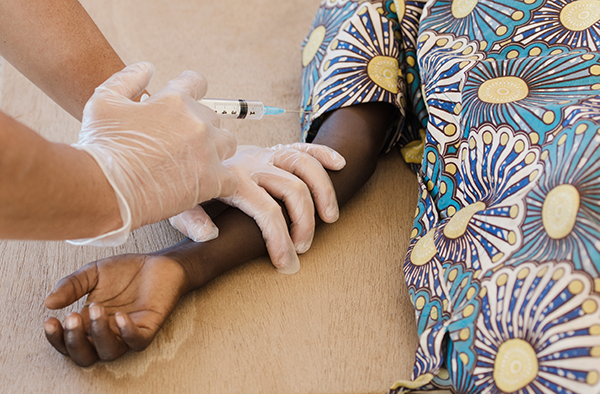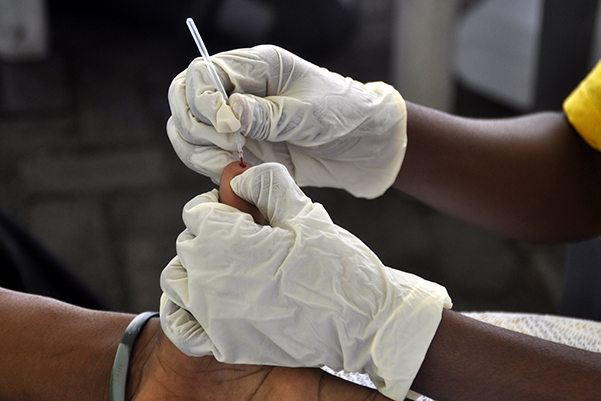As we enter month six of the coronavirus pandemic, more reports emerge of the indirect health effects of the pandemic. While some countries around the world begin to ease or lift lockdowns, others are preparing for a second wave with reintroduction of lockdowns and travel restrictions. Our previous blogs on the indirect health effects of COVID-19 show the pandemic has created additional barriers for patients accessing essential care through restrictions on movement, lack of service provision, stigma, impoverishment from loss of livelihoods, and avoidance of care due to concerns over contracting the virus. This blog highlights the impact of living through a pandemic on mental health, including worsening substance abuse disorders, and on nutrition and access to primary health care.
As readers of earlier posts in this series know, we have built an open-access inventory of accounts of indirect health effects of COVID-19 to support researchers working to quantify these impacts and devise pragmatic approaches to minimising them. We are posting regular snapshots such as this one to broadcast some of the reports captured in our inventory. Rather than a comprehensive overview, we aim to give a horizontal view of the indirect impact of COVID-19 around the world, showing the complex and fast-changing nature of the pandemic.
Health areas
Non-communicable diseases
Cases of cholera have drastically increased in the last few months in Yemen owing to a drop of around 50 percent in the number of people seeking treatment, due to coronavirus. Oxfam and UNICEF report that Yemen is now facing the worst cholera outbreak in modern times, with 110,000 cases between January and April this year.
Immunisation
The South African Department of Health reports that national immunisation coverage in South Africa dropped from 82 percent in April 2019 to 61 percent in April 2020, when South Africa was at its highest level of lockdown. Of most concern is the sharp decrease in the coverage rate of the second dose of measles vaccine, from 77 percent in April last year to 55 percent in April this year.
Nutrition
In a study in Obesity Society, Lim and co-authors find that in South Korea, there has been an observed a change in dietary patterns towards unhealthy foods, as well as a marked increase in time spent sedentary during the COVID-19 pandemic. Causes include increased dependence on food delivery services, which increased 66 percent, and economic disruptions causing households to increase consumption of cheaper, more unhealthy foods.
Primary health care
A longitudinal study by Siedner and co-authors finds that in rural South Africa, access to primary healthcare services has changed during lockdown. While there was no significant change in total clinic visits a day from prior to the lockdown, there was a reduction in child healthcare visits during lockdown, both in children younger than one and in children one to five years old. In contrast, when lockdown was lifted, there was an immediate increase in HIV visits.
Maternal and reproductive health
A new study in The Lancet demonstrates that the COVID-19 outbreak has decreased the number of women giving birth in hospital by 43.2 percent. The study also shows a significantly increased in-hospital mortality among pregnant women and late intrauterine foetal death and stillbirth after the lockdown period, when compared with the pre-lockdown period.
Mental health
The mental health of populations who have implemented lockdowns has been shown to be worsening in a recent study in The Lancet. Brooks and co-authors conducted a literature review of quarantine situations that shows that prolonged confinement is related to psychological damage that can last for months after the end of lockdown periods. They find that the stresses of a quarantine should be mitigated by officials providing accurate and timely information to the population, adequate resources, and special attention to healthcare workers.
Increased cases of substance abuse have been reported in countries affected by COVID-19, in particular where lockdowns have been implemented. In the US, states like Kentucky have reported signs of a significant increase in opioid overdoses during the COVID-19 pandemic, from emergency medical services data.
Various
Healthcare utilisation trends
Many countries have reported drops in healthcare utilisation throughout the lockdown, and India is no different. PM-JAY, the national health insurance scheme in India, has shown a decline in average weekly claim volume of 51 percent during the 10-week lockdown period compared to the 12 weeks preceding lockdown, but with wide variation across states and procedure type.
Tracking impact in the US
As cases in the US continue to increase, a team from Harvard and Brown universities have built a real-time economic tracker to measure the economic impacts of COVID-19 on people, businesses, and communities across the US. The data is sourced from credit card processors, payroll firms, and financial services firms, and includes statistics on consumer spending, employment rates, business revenues, job postings, and other key indicators.
Homelessness
A new paper from VanderWeele discusses the difficulty in simply using current total excess mortality rates as an impact of COVID on mortality as it is insufficient to show the mortality consequences of unemployment, isolation, and depression that are yet to manifest.
In good news...
Our previous blog reported influenza rates have shown positive declines in Singapore, and it appears that fighting COVID-19 achieved similar significant reductions of severe influenza in Taiwan. Chan and co-authors report that data from Taiwan CDC has shown a reduced influenza and a reduced death toll from pneumonia after the establishment of disease prevention measures to fight the COVID-19 outbreak.
Stay tuned for more on the indirect health effects of COVID-19, and please do get in touch by email (lregan@cgdev.org), Twitter, or in the comments section of this post if you have resources or news that you would like to see included in our inventory. Our thanks to those of you who have already contributed—please continue to share!
CGD blog posts reflect the views of the authors, drawing on prior research and experience in their areas of expertise.
CGD is a nonpartisan, independent organization and does not take institutional positions.








